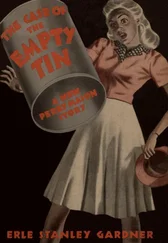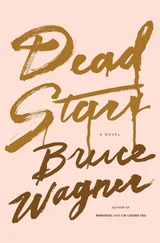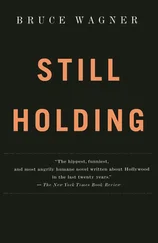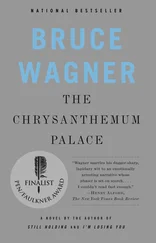Kelly was admitted to a psych ward for a week. A full week of heavy meds. They wouldn’t let me visit for the first few days and when I did, she was barely responsive. By the time she came home, the detectives had finished their grim interrogatories and I’d been cleared. They’d gone around asking the neighbors what my relationship with my son was like, you know, if they’d ever seen me smack him around or jerk him off, that kind of thing, but after a while their hearts weren’t in it. I think it became kind of apparent that it was an anomaly. His being nude. My wife alibi’d out, as they say on TV. She was 60 miles away at the time of the event, teaching. On television, you either alibi out or lawyer up.
She slept on a futon in the room where he died. The meditation room that used to be her room, her sacred yogini space. The irony being that now it was incomprehensibly sacred. Though maybe there’s no irony after all… She ignored the altar — she’d fussed for weeks over its installation — with its incense and brassy representations of Amitabha and Sanghamitta, color photos of her teacher, and black-and-white ones of sundry cantankerous diapered siddhas from the last century. You know, the usual suspects. She didn’t talk much and hardly ate the food prepared by a never-ending stream of friends and neighbors — yes, as in Esdras , they rested, so they would have the strength to come back and comfort her, though no comfort was possible. It seemed like the whole world was shaken by that boy’s death. Folks circled the wagons around us. They were protective and I appreciated that.
I understood why Kelly never left that room. In her emptied-out postlapsarian state, bitten by all manner of plumed serpents, her febrile obsession became to return to the Garden at all cost. She wanted to breathe the same air our son had. And who was to say his effluence wasn’t present, that some of his microbes weren’t still in the room? He’d napped on that futon and she wanted to nest in a bed of his skin flakes, her body caressed by the ethereal snowfall of subatomic particles and microscopic motes, she longed to breathe Ryder-rich oxygen saturated by sloughed-off cells and bacteria exhaled from his lungs and sinus. She would absorb through mucous membranes anything left of him. He had come from her and so he would return, in soluble, invisible, ingestible form. Pitiably, she prayed for something of him to imprint itself on her very eyes — what a blessing it would be to know for sure! — it would sustain her if she could look at the world through a cold case filter of his DNA. She’d close her eyes and never open them again if that’s what it took not to lose him, go blind if it meant being subsumed. She’d settle for anything, as long as it wasn’t his extinction.
Kelly sat on a cushion in front of the broken, empty chair as if kneeling abjectly before a new altar, a sacrificial one honoring impossibly infinite, impossibly malevolent forces. She courted it, for her life… sitting with such helplessness, futilely waiting, not praying, for she knew that prayers were pointless, that such a thing would never respond to prayer, no, just waiting, abiding , for whatever it was that swallowed him to spit him out. Sometimes I positioned myself so I could watch her undetected through the open door (it was a house rule that it never be closed again). She was having a dialogue with that chair, with body and soul, maybe even her sex. Once I saw her sit in it stock-still — on the plank, rather — feet on the floor, back upright, eyes half-shut. Other times, she’d sit before it and lay her head on that infernal plank like an exhausted child in the lap of its mother… or a lover who betrayed her. Then she’d pace and circle, raging, an interrogator outgunned—
And one day, she was done.
She only asked one thing of me: to burn the chair.
Kelly used to love that chair, isn’t it funny? She actually stole it — but I suppose that isn’t fair. Let’s say she borrowed it and never gave it back. She found it by chance, in a storage room at school. See, my wife’s family owned an antiques shop and she worked there every summer until she was 18. Her dad had an amazing eye that he passed on to Kelly. They were very close. By the time her apprenticeship was done, she could have gotten a job at Sotheby’s. So there it was, shoved in with a lot of other chairs in a forgotten storage room, only it was different. Very different. Not because it was bruised and battered — the canework seat was broken through — or because it was anachronous, out of time. All Kelly needed was one look to know what she had, she’d come across these types of chairs at her father’s shop before. I remember when she brought it home. She sat it in the middle of the living room, poured us some Chablis and commenced a frothy little Antiques Roadshow routine, with yours truly playing the excited rube. “Sir, this is a very fine elbow chair , Edwardian, circa 1900, and as you can see it is made from mahogany. That’s Cuban mahogany.” With an appraiser’s flourish, she informed that if put on the market it might fetch around $800. When I told her she was no better than a common thief (all in good fun), she assured me that no one would miss it. Besides, she said, it would cost a few hundred to do a halfway decent repair and the district certainly wasn’t going to shell that out. Shit, she did them a favor. Kelly couldn’t for the life of her deconstruct how it had come to be nestled among all those crampy, banged-up desks from the ’60s, the ones with the tiny, graffiti-carved tables attached. So she stuck it in the Volvo and drove on home. She never got around to fixing it; as a temporary measure, she laid a short piece of wood across the busted seat. That was what Ryder jumped from.
I had very careful pre-incineration instructions: it was to be broken apart until its pieces were unrecognizable. The order wasn’t given so it would fit into our fireplace, though that certainly helped. She just didn’t want it to look like a chair when it burned. I knew what she was doing. She wanted to strip it of its identity, to humiliate it. She wanted it tortured — she wanted to hear it scream.
You ask how I was doing? Well, you may as well ask how I’m doing now , because it’s kind of the same. I dissociate. Space out. I run from pain — to food, sex, drugs. The one thing I don’t do is overspend. There isn’t a shopaholic bone in me. I do bury myself in books pretty well… You know, talking about all this, Bruce, makes me wonder if I haven’t even come close to the point of grieving. Or if I’m even capable. See, those wonderful experiences with the Catholic Church helped me learn to compartmentalize. Don’t you hate that word? Did you ever hear of something called Compartment Syndrome? A friend of mine had it after an automobile accident. They wound up cutting off his arm, on Thanksgiving no less. Compartment Syndrome can happen after a fracture. A closed space gets created in your arm or leg — a little compartment — and for some reason the doctors can miss it. The pressure gets so bad in there that all the nerves and tissue and muscle die, it can get to where they can’t do anything but amputate. I guess you could say that psychologically, emotionally anyway, I’ve found a way to create closed spaces that don’t result in amputation. Though maybe I’ve lost more limbs than I think! When Ryder died, I busied myself with tending to my wife. I’m muy codependent, if you know anything about that. Then, wham! — the settlement came in. A million and change after the lawyers took their piece. (When I told Kelly, it didn’t seem to register. Since celebration wasn’t an option, there wasn’t anything for her to do with the information.) The windfall became one more compartment for me to chill in. Another room, and a well-decorated one at that.
Читать дальше












